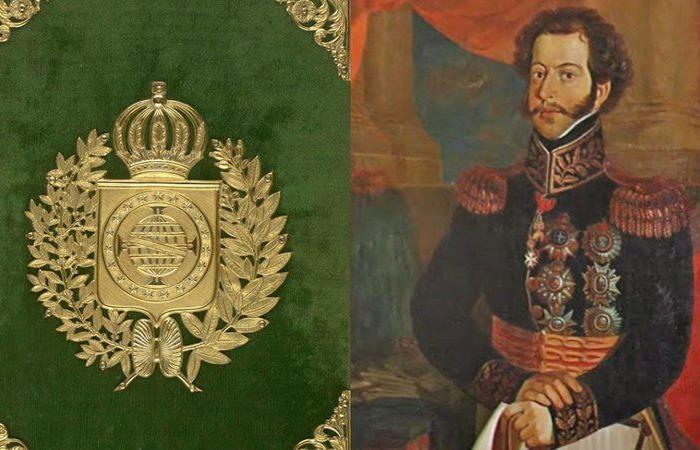Exactly 200 years ago, the first of seven Brazilian constitutions was granted by Dom Pedro I; understand what has been established
Brazil was the only South American colony to adopt monarchy as a government regime after its independence. With a plan to become a legitimate Western State, based on the structural characteristics of European monarchies, on May 3, 1823, a constituent assembly was established to define the legal basis of the modern Brazilian State.
This initiative, which involved 100 deputies from all the country’s provinces, soon triggered conflicts between three groups: the Portuguese, who defended the absolutist monarchy; the liberals, who supported the constitutional monarchy in which the emperor had only symbolic and representative powers; and the radical liberals, who fought for deeper social and political changes, some even already in favor of the republic.
In his inaugural speech to the assembly, Dom Pedro I tries to take advantage of his positive reputation for having disinherited the Bragança tradition and assumed Brazil’s political autonomy against his father’s empire and clarifies his expectations in relation to the new Constitution: legitimizing his veto power and concentrated control over institutions. Of course, this generated intrigue.
On November 12 of that year, in the event that became known as the “Night of Agony”, the emperor mobilized Army troops to invade the assembly, arrest political opponents and dissolve the body.
Thus, Pedro I creates an Imperial Council formed by ten Portuguese-Brazilian citizens, linked to the interests of the high national bureaucracy and the Portuguese Party, especially to draw up the Magna Carta granted on March 25, 1824, the country’s new bicentenary. As a result, the date was marked as Constitution Day. In total, Brazil had seven Constitutions.
1824 – Paradoxical and long-lived
At the same time as it receives liberal and parliamentary aspects, the Constitution of 1824 concentrates power in the hands of the executive and the king. It is associated with imperial European liberalism, but also written to frame the legality of slavery. Among the seven charters in Brazilian history, the first was the longest lasting so far: 65 years, remaining until the decree of November 15, 1889, which replaced the Empire with the Republic.
Currently, our Constitution establishes the Three Powers: Executive, Legislative and Judiciary. But our first Magna Carta established the Fourth Powercalled Moderator – represented by the figure of the emperor himself, he had autonomy above the other three, giving Dom Pedro the right to intervene in the others.
1891 – From monarchy to republic
A new constitution was promulgated in 1891, marking the transition from monarchy to republic. Changes in the country’s political structure emerged such as the installation of the presidential government, elections by direct vote and the implementation of terms of office: four years for president, nine for senators and three for federal deputies.
1934 – Democratic bias
As a consequence of the Constitutionalist Revolution of 1932, the 1934 Constitution was written according to its preamble: “To organize a democratic regime, which ensures unity, freedom, justice and social and economic well-being to the Nation”.
Establishing democracy, she instituted the secret and mandatory vote for people over 18 years old and provided women with the right to vote. He also predicted the creation of the Labor Court and the Electoral Court.
1937 – The Estado Novo dictatorship
The fourth Constitution of Brazil was granted on the same day that Getúlio Vargas implemented the Estado Novo, on November 10, 1937. Receiving the nickname “Polish”, for being inspired by the Polish semi-fascist model, the new maximum law centralized power in the Vargas himself, allowing him to rule as a dictator, censoring and co-opting the press, in addition to admitting the death penalty and ending the right to strike.
1946 – Democracy restored
Promulgated on September 18, 1946, the fifth Constitution reestablished freedom of the press and political organization. In addition to making everyone equal (before the law), it also abolished the death penalty, reestablished the separation of the Three Powers and guaranteed the vote for men and women over 18 years of age (excluding, however, the illiterate). It also did not require an absolute majority of votes for executive representatives.
1967 – Coup legalized
Drafted under pressure from the military, the 1967 Constitution legalized and institutionalized the military dictatorship Brazilian, who took over the country after the 1964 Coup (theme of this edition’s cover story). The creation of an Electoral College of delegates and members of Congress served to choose a president – which came into force in 1974, when Ernesto Geisel was elected.
1988 – The Citizen Constitution
Conceived in the process of redemocratization, after 21 years of dictatorship in Brazil, the 1988 Constitution – in force to this day – became known such as the Citizen Constitution.
Totaling 250 articles (it is the second largest in the world, second to India), guarantees rights to the population such as full freedom of the press, homosexual civil unions and the right to vote for all Brazilians over the age of 18 (including illiterate people).
Tags: today Constitution Day Understand origin date
--





